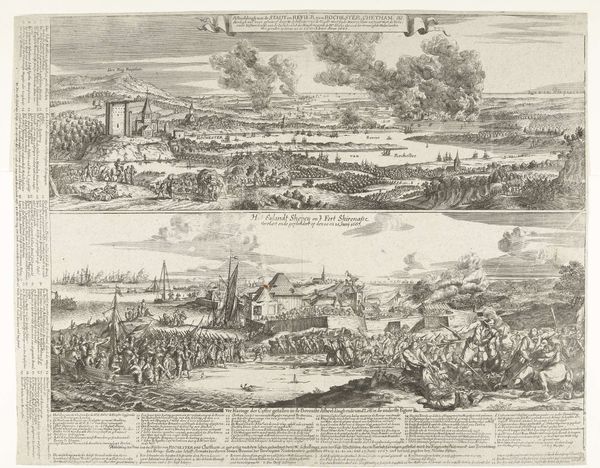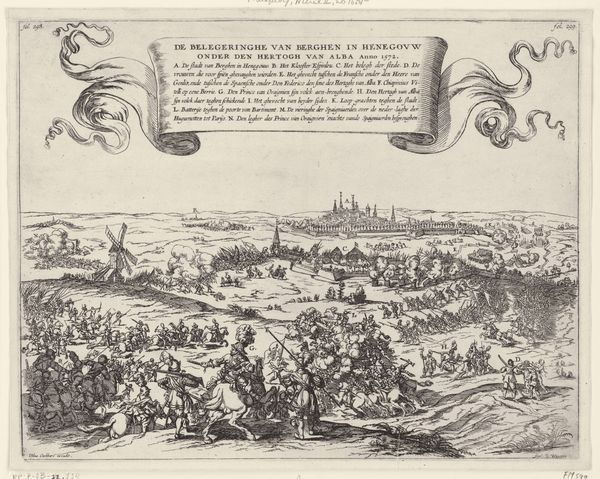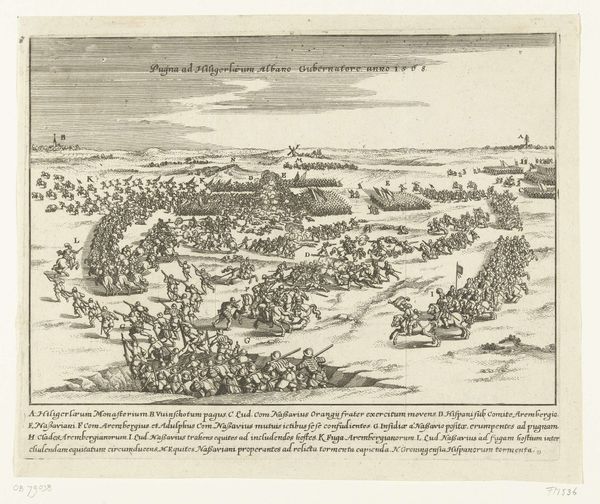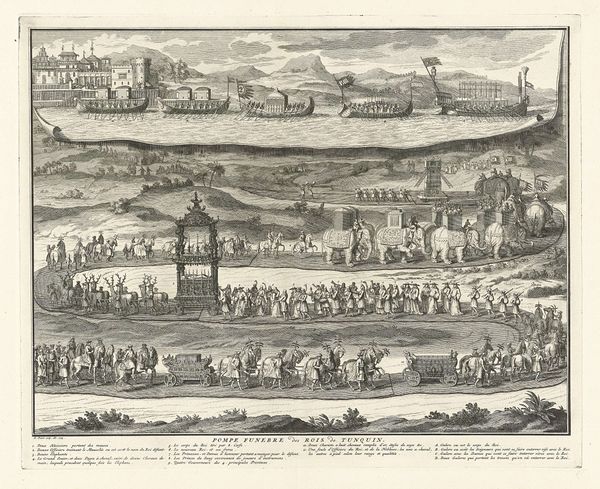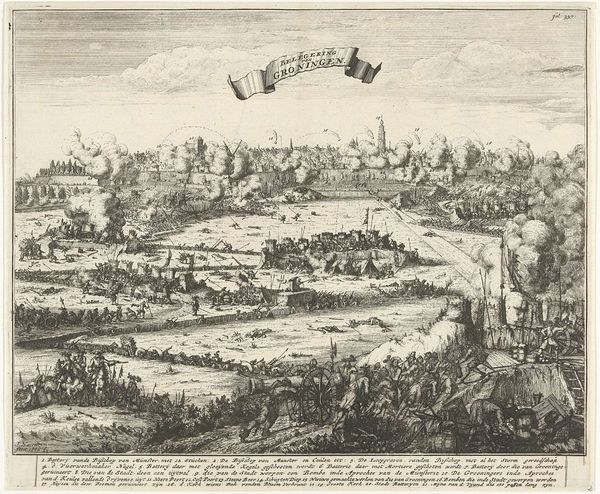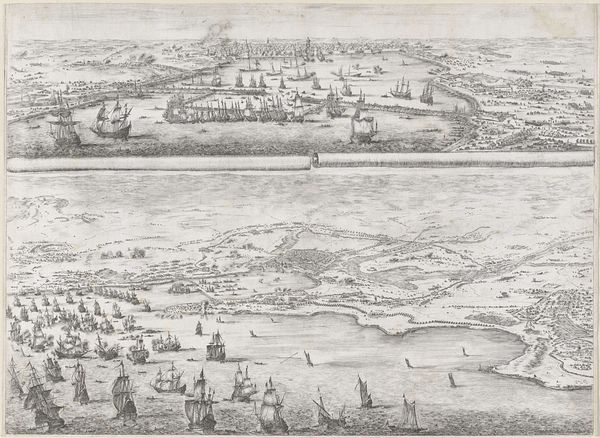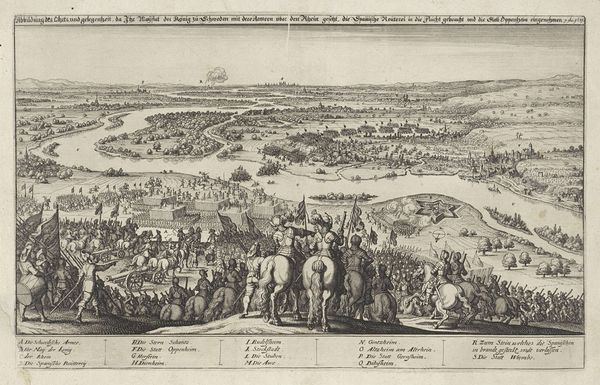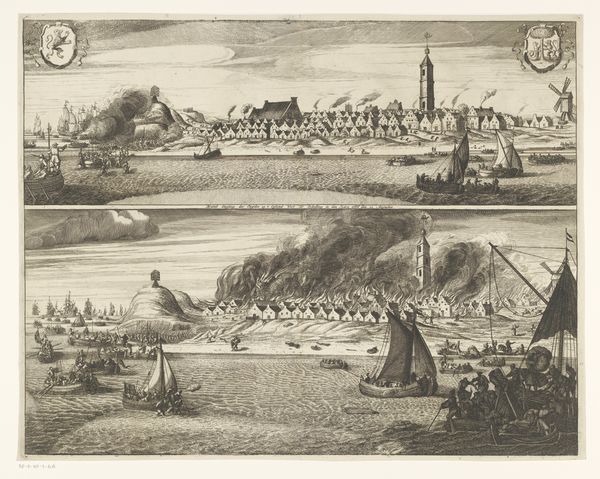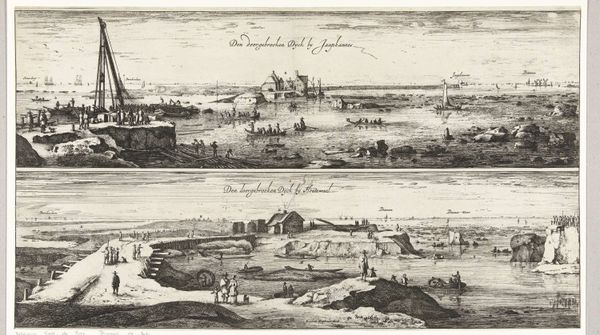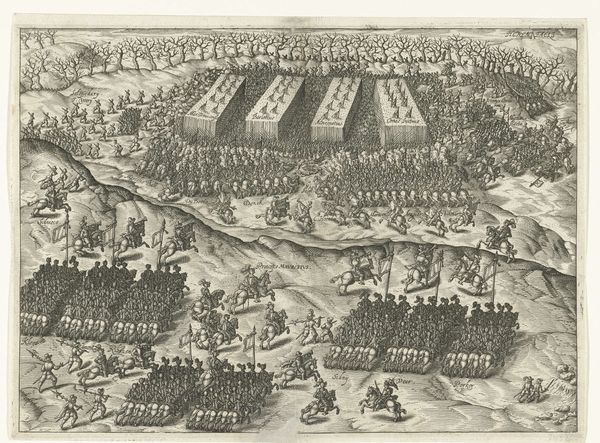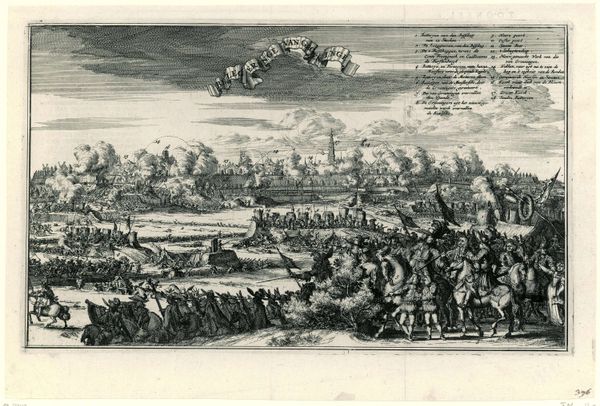
print, engraving
#
narrative-art
#
baroque
#
pen drawing
# print
#
pen illustration
#
old engraving style
#
line
#
cityscape
#
history-painting
#
engraving
Dimensions: height 193 mm, width 312 mm
Copyright: Rijks Museum: Open Domain
Editor: Here we have Coenraet Decker’s "Afslaan van de Franse aanval op Aardenburg, 1672," an engraving made sometime between 1672 and 1675. The crisp lines and detailed battle scenes are remarkable. It feels so… deliberate in its portrayal of Dutch strength. How do you interpret this work within its historical context? Curator: This piece speaks volumes about the politicization of art during times of conflict. Beyond just documenting an event, Decker is crafting a narrative of Dutch resistance against French aggression, a key power struggle in the 17th century. The print emphasizes Dutch agency. But let’s consider perspective – who benefits from this image? Editor: Presumably, the Dutch population. To boost morale, maybe? Curator: Exactly! And what’s omitted? What about the perspectives of those impacted by this conflict? Those considered collateral? Are we seeing an honest depiction, or are we seeing propaganda masked as history? Editor: So, by focusing on the victors' narrative, the print inherently silences other voices. How does this affect our understanding of the event itself? Curator: Precisely. This is not just about celebrating military victory; it’s about solidifying a particular national identity. Consider the power dynamics at play: who is allowed to represent history and whose stories are suppressed. How do we see similar narratives being constructed today? Editor: That's a great question, and I think it makes me see this piece and others like it with new eyes. I thought I was just admiring the artistry and detail, but now I recognize the embedded layers of politics. Curator: Absolutely! Understanding these contexts helps us engage with art as more than just aesthetic objects; they become active participants in shaping our understanding of history and power.
Comments
No comments
Be the first to comment and join the conversation on the ultimate creative platform.

